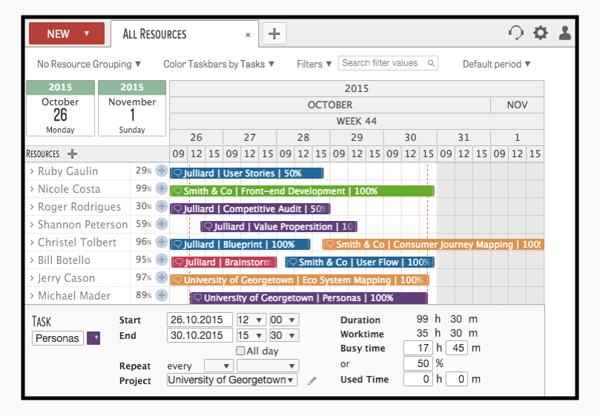

In a horizontal practice, people pass work between them to fully serve the client. This simplifies capacity planning because you only need to know the partner’s (or team’s) ability to accomplish any given service for any given client.īy combining how long each service will take with what processes are typically performed, you can calculate how many projects will fill the partner’s and the team’s time and, subsequently, how many clients they can take on simultaneously. In a vertical accounting firm, a partner often owns the entire relationship with a client and a pod or team that is responsible for completing all the work. How you approach capacity planning differs depending on whether your firm is organized vertically, horizontally or as a hybrid. The Impact of Your Firm’s Organizational Design
#Capacity planning time durations plus


While the critical path is often used for large, complex systems, it is also quite helpful in multi-partner accountancies that deploy multiple processes.Īccording to David Smith from Smithink, an effective capacity plan requires two calculations: Critical path insights can also help determine the maximum amount of slack allowable for each non-critical chain activity, without affecting the project schedule. Understanding your critical path helps make dependencies visible, reduce project duration (by compressing the critical path activities) and enable quick analysis of the impact of missing a key milestone. One method to do this is via the critical path, which is the longest sequence of activities that must be finished on time for the project to be completed by the due date. Understanding the processes that crisscross your organization from start to finish can uncover how processes overlap one another and share resources. That means more work can flow through the system in the short and long term. Is it a specific department? A decision maker? The crunching of numbers, or the advisory analysis? With well-defined processes, hold-ups should be apparent.įixing or improving throughput in your bottlenecks will likely have the biggest impact in your capacity, either by improving staff productivity or freeing up more time. When evaluating your capacity and thinking about capacity planning, you must understand two concepts from the outset: bottlenecks and critical paths.Ī bottleneck is a part of a process with a limited capacity in comparison with the rest, reducing the capacity of the overall process. The Basics: Bottlenecks and Critical Paths

Capacity planning is the process of determining the resources (time, people, etc.) that the firm needs to meet changing demands for its services – in other words, how it will meet its current and future client needs. When crunch time hits, does your team have the bandwidth for new work – or even for work already in progress? Learn critical project management and capacity-planning techniques to maintain visibility across projects and achieve balance as you go.Ĭapacity is the maximum amount of work an accounting practice is capable of completing in a given period of time.


 0 kommentar(er)
0 kommentar(er)
